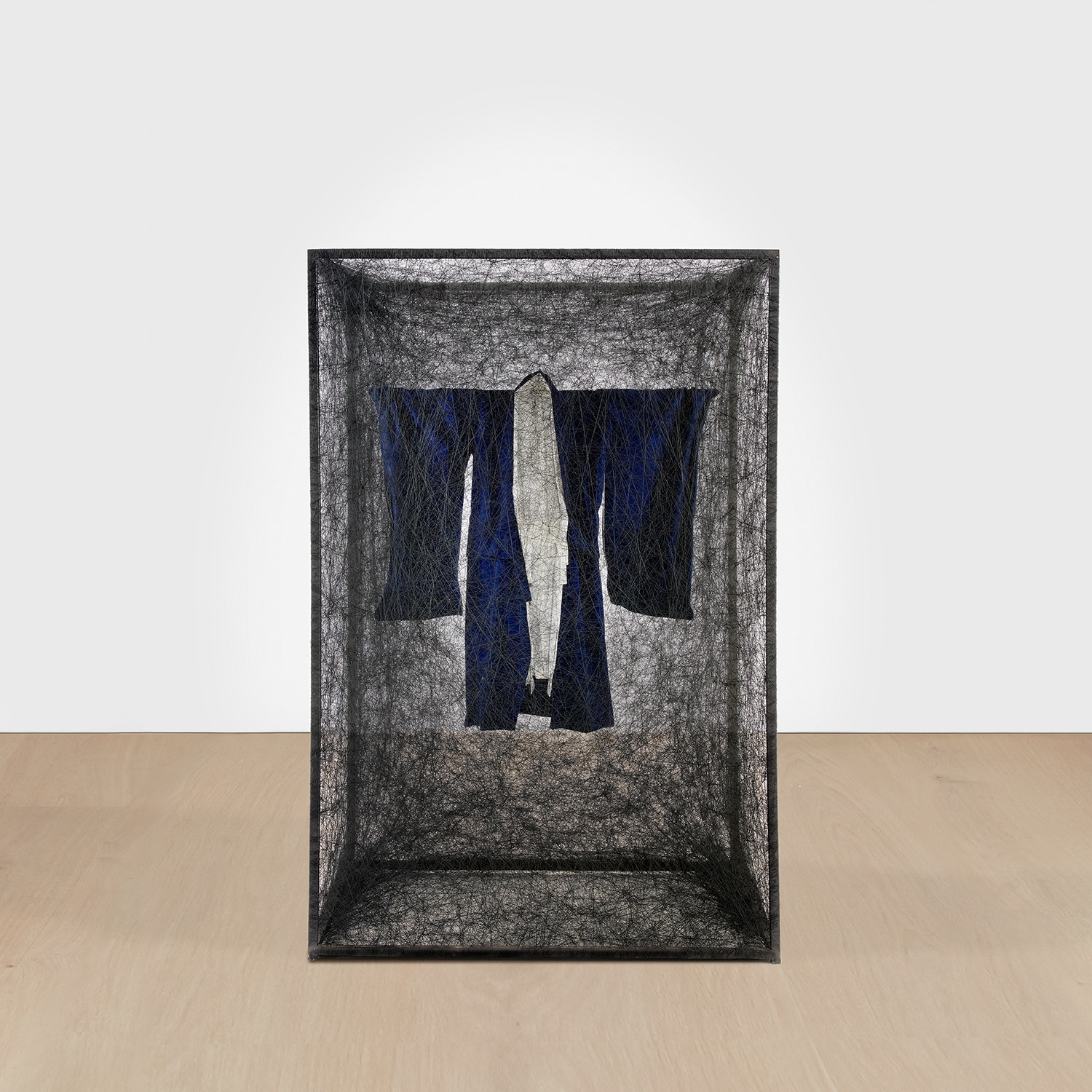
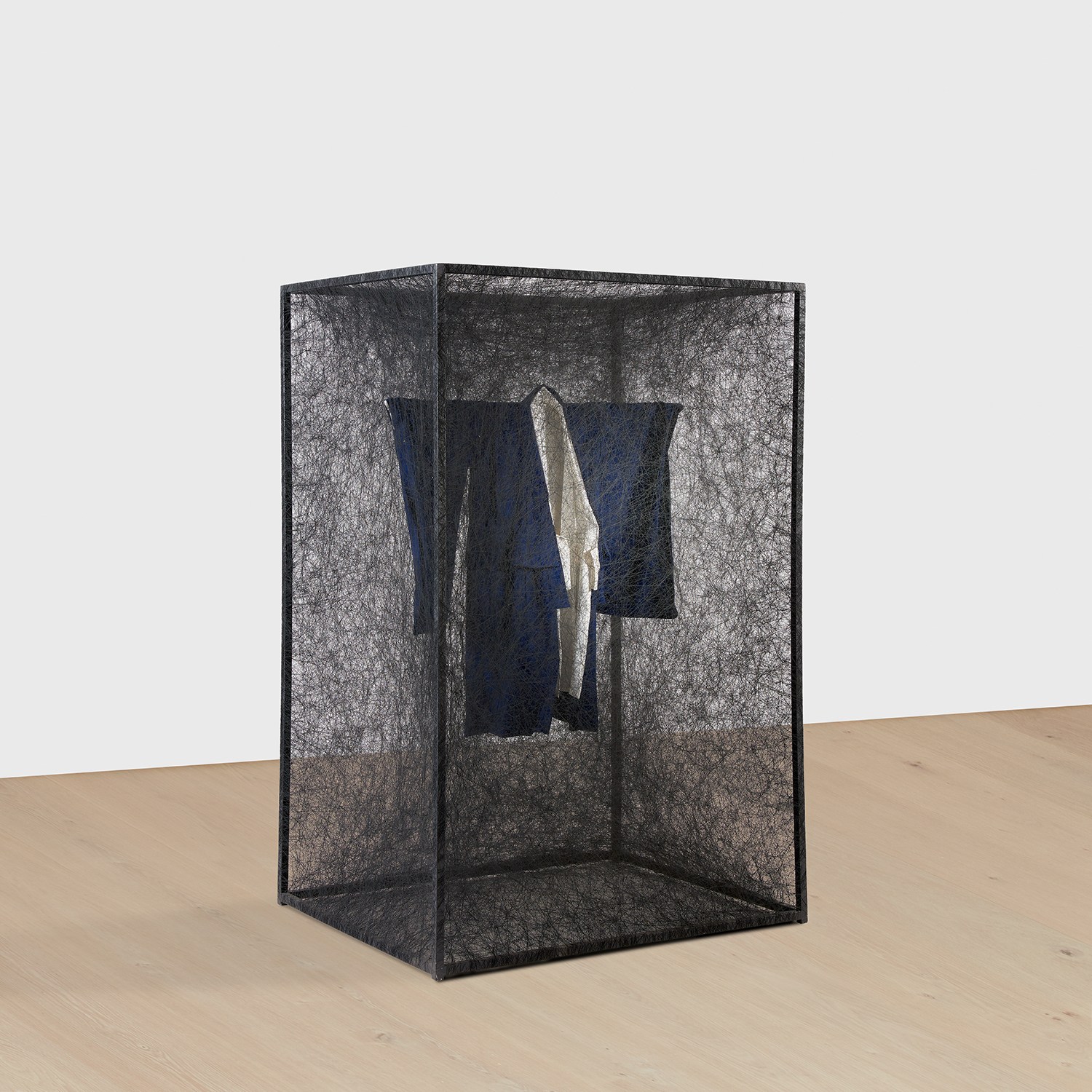
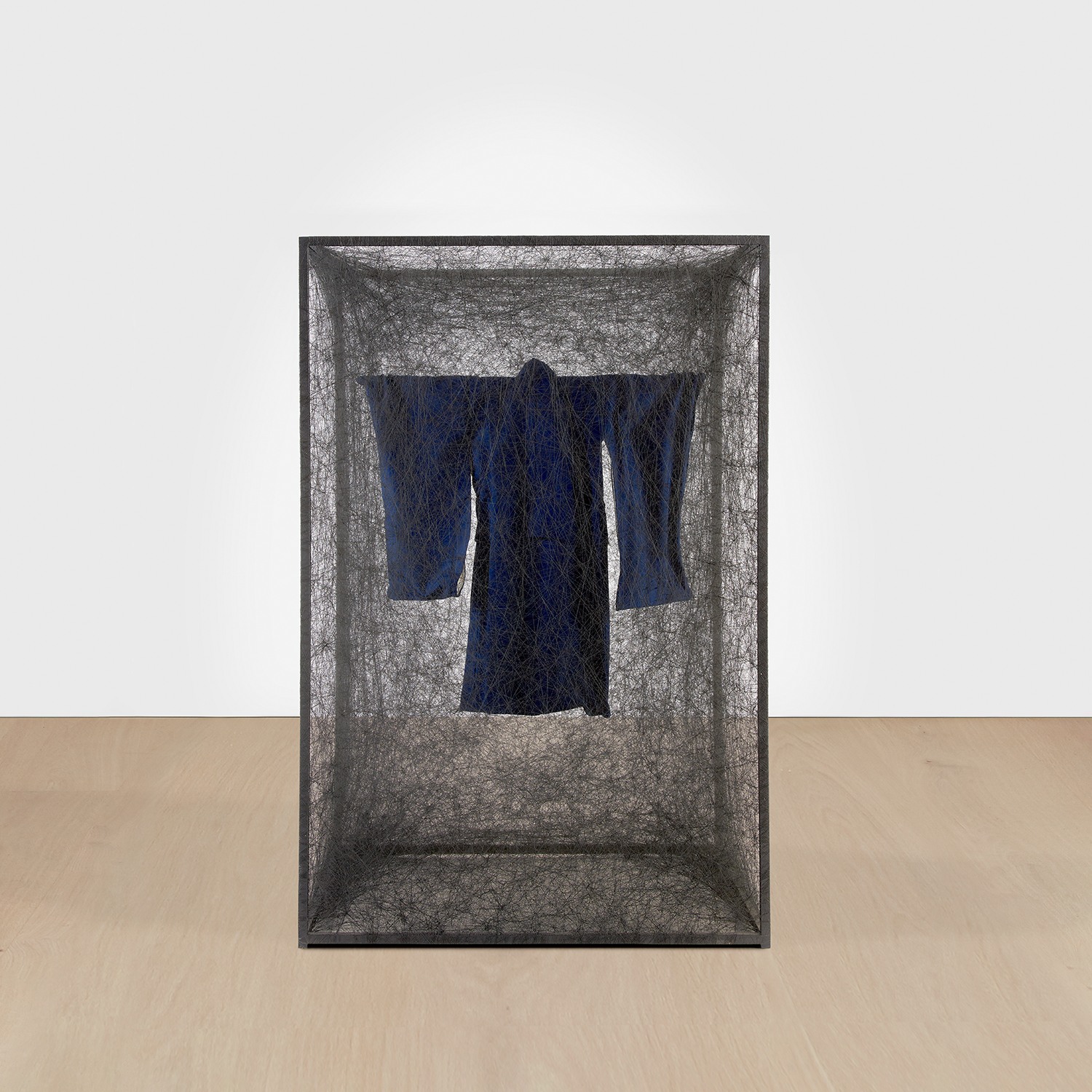
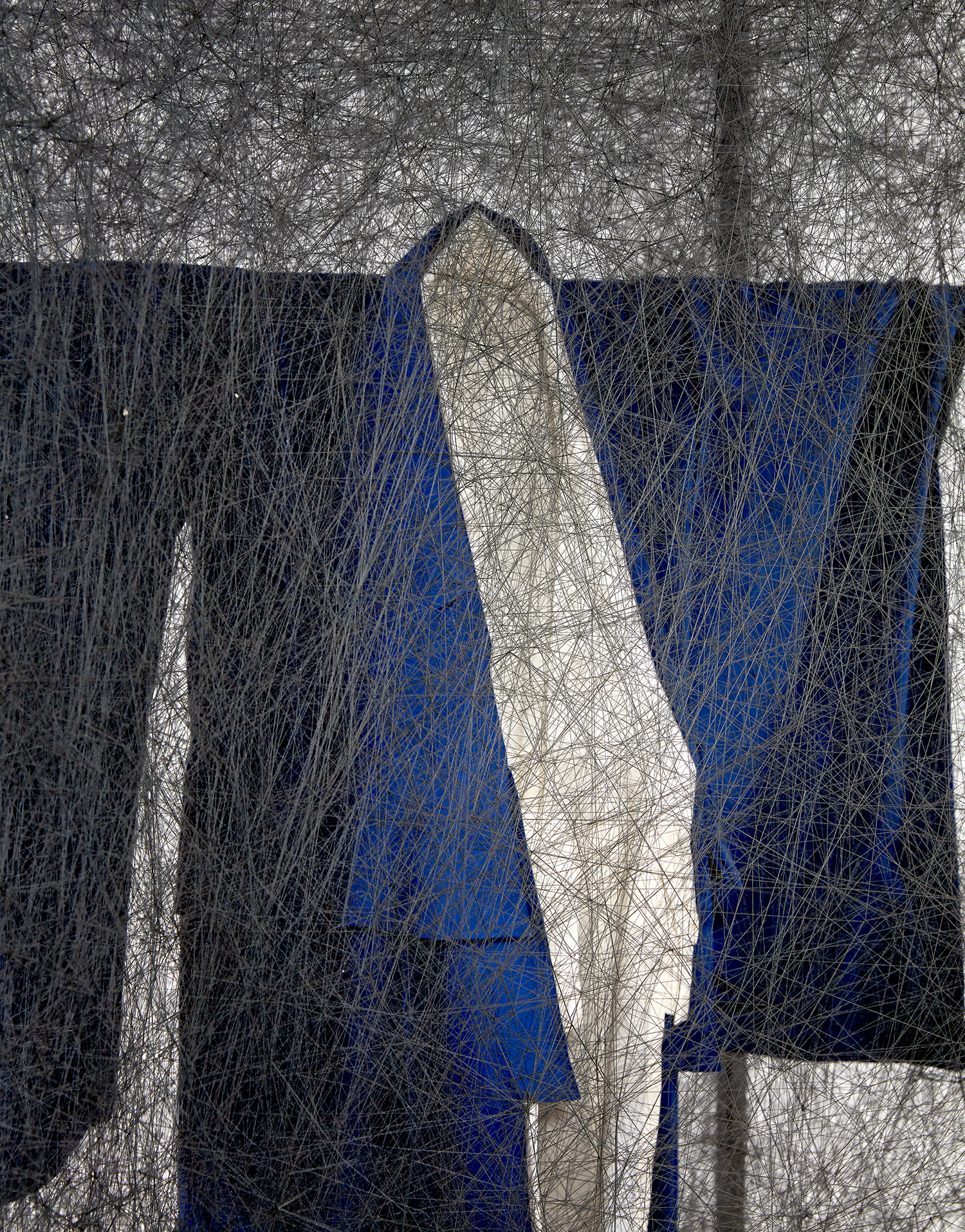
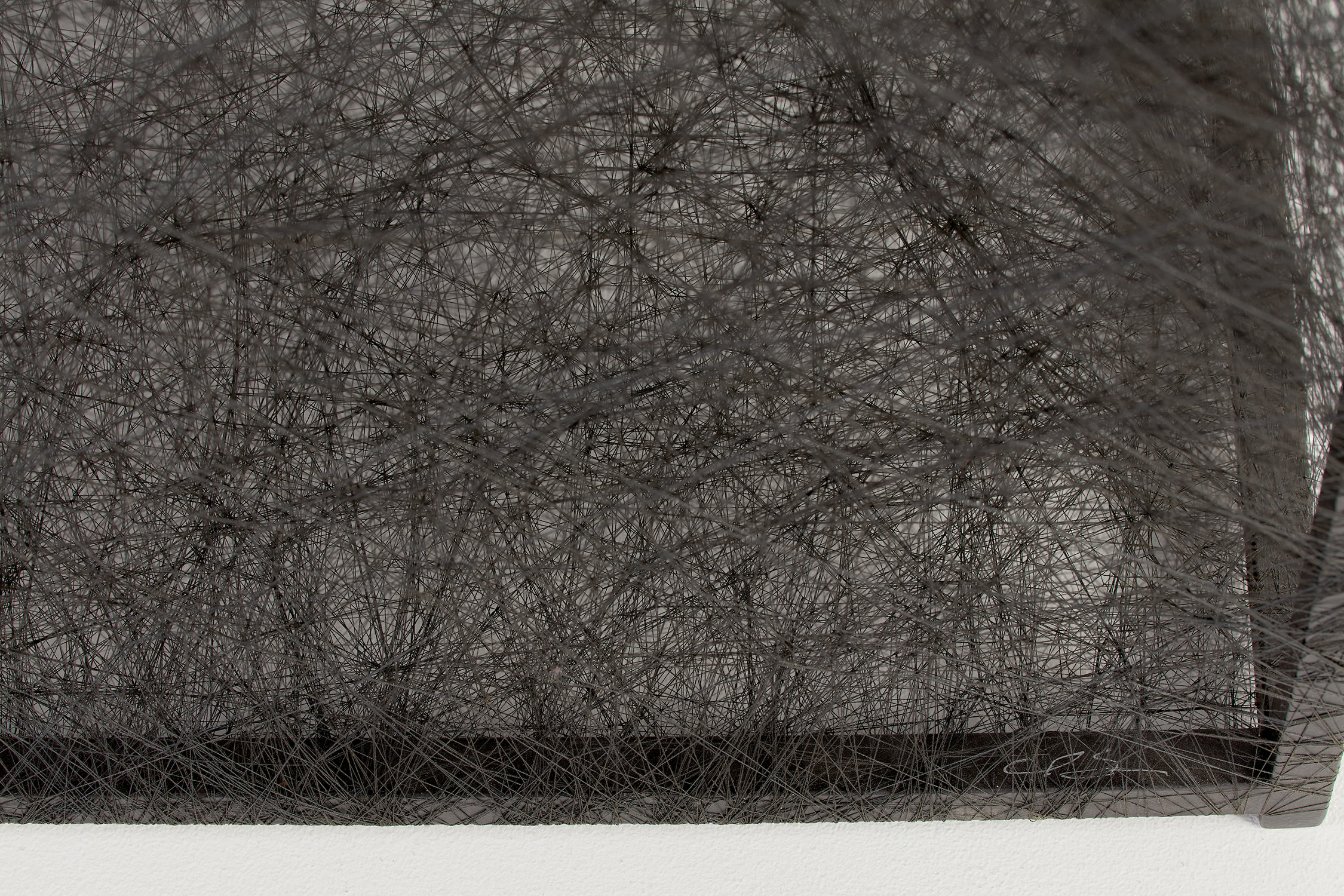





16
Chiharu Shiota
State of Being (Boy’s Kimono)
signed with the artist's initials 'CS' reverse lower right
metal, black thread and Kimono
151 x 100 x 80 cm. (59 1/2 x 39 3/8 x 31 1/2 in.)
Executed in 2013.